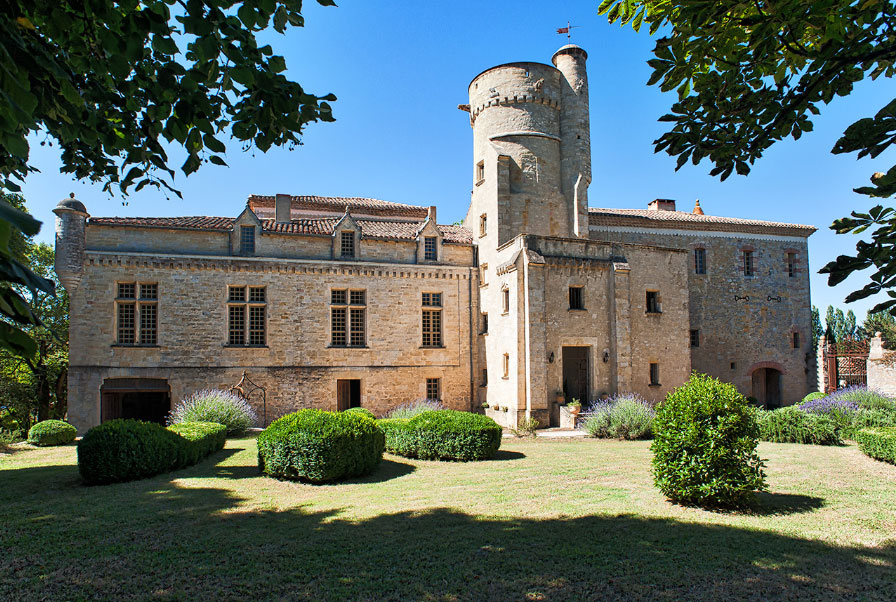
Erected towards the end of the 12th century, the fortified site of Belflou, formerly called "Valflor", the valley of flowers, or Saint Félix de Lanès, was first the possession of unidentified lords, then attached to the house of Laurac.
In September 1206 - as attested by a charter co-signed by the Counts of Foix and Toulouse, the oldest document relating to Belflou known to this day - Aimeric de Roquefort, Lord of Laurac and sympathizer of the Albigensian fraction of the Cathars, gave Belflou in fief to four brothers, the knights Bernard, Hugues, Guy and Olric de Saint Germain.
A bit of history...
In 1209, Simon de Montfort, Count of Ile-de-France, was called by Pope Innocent III, acting in agreement with King Philip II Augustus, to lead the crusade against the Albigensians.
In 1211, he had Aimeric de Roquefort and eighty of his men executed, probably including the brothers of Saint Germain. He then confiscated his possessions and lordships, including the stronghold of Belflou, which passed successively into the hands of the Crusaders, agents of the Count of Toulouse and representatives of the kings of France.
In 1310, King Philip the Fair donated the lordship of Belflou to Philip of Fontaynes and his heirs for services rendered in his administration.
For nearly five centuries, the Fontaynes family maintained and developed the seigneury. In 1581-82, Huguenots temporarily occupied the premises.
In 1789, Belflou passed to the revolutionaries.
The Fontaynes then took refuge in Switzerland and the property has since been occupied by various people.
The castle of Belflou - mainly 13th - 14th centuries - was originally a "forcia", a secondary feudal fortress, probably consisting of a keep which became the south square tower, wooden constructions and the water ditch.
At the end of the 13th and beginning of the 14th century, the fortress was transformed into a fortified castle, the appearance of which will not change much to the present day.
The elements that have now disappeared are a drawbridge to the west, replaced by a small stone standing bridge, some outbuildings in the courtyard, a wooden parapet walkway overhanging the surrounding wall and, perhaps, a second tower to the north-east.
In the early 16th century the north staircase tower was raised and decorated with busts and gargoyles, while its forebody was redesigned.
In the 17th and 18th centuries, several openings, including the windows to the south, were enlarged.
In the 19th century the north façade and the upper parts of the east wing were redesigned, while a small stone bridge was added to the east to access the adjoining land.
Overall, the building and its fortifications are a well-preserved example of the defensive architecture of the early Middle Ages in Lauragais.
The medieval water ditch is the last remaining intact in Languedoc Roussillon.
The castle and its water ditch have been protected as a historic monument since 1948.
The site was classified in 1989.
The mayor of Belflou is a man of the field: the son of a school teacher, former French wrestling champion, CRS then RAID policeman for 36 years, Bruno Pomart is at the origin of the association "Raid Aventure Organisation", which is dedicated to the reintegration of young people in difficulty through sport, effort and rigour.
Belflou Castle
Avenue du Château,
11410 Belflou
Tel: 06 50 61 48 44
http://chateaudebelflou.fr/
Translated with www.DeepL.com/Translator
(free version)

